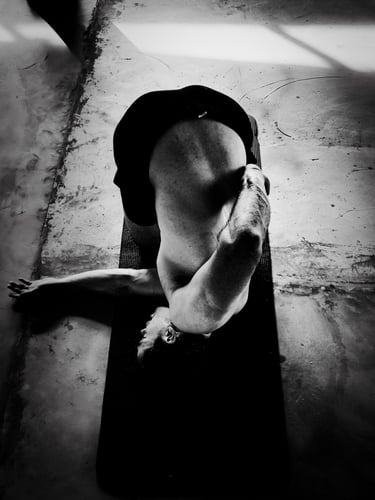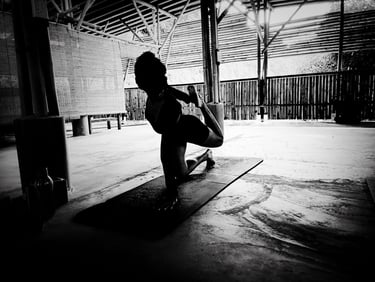DOMS : How to fix
That Soreness?
Those tender muscles after your first few sessions aren’t a punishment—they’re proof that your body is paying attention. Scientists call it DOMS (Delayed Onset Muscle Soreness), but we prefer to think of it as your muscles introducing themselves to their new job.
Each time you repeat a movement, your body gets a little wiser. Your nervous system learns the pattern, your muscles build tolerance, and what once felt impossible starts to feel automatic.
This is why we don’t constantly switch exercises or pile on intensity. We’re not trying to confuse your body—we’re trying to guide it.
The magic happens in repetition, not variety.
What Your Body Needs
We live in a culture that screams: more, harder, faster. But your body speaks in whispers, asking for something entirely different:
Time to adapt (strength builds over weeks, not days)
Familiar patterns (so your brain can focus on effort, not figuring out what to do)
Rest between efforts (muscles grow while you sleep, not while you sweat)
This might seem boring compared to flashy workout videos, but your body doesn’t care about entertainment—it cares about safety and gradual progress. When we honour its needs, the outcomes you want—feeling stronger, moving better, having more energy—emerge naturally.
When Everything Feels Different (And That’s Perfect)
Starting a fitness journey—whether you're new to movement, returning after years away, or navigating changes in your body—can feel overwhelming. Your muscles ache in places you forgot existed. Simple movements feel clumsy. Even lying still becomes strangely uncomfortable.
Is DOMS good or bad for the muscles? Everything you're feeling is not just normal—it's necessary.
Why We Start with Breath, Hips, and Spine
Before we ask your body to lift, bend, or twist, we help it remember how to breathe deeply and move from its centre. Think of it like tuning an instrument before playing a symphony.
Your breath is the conductor of all movement. When it's steady and full, everything else flows more easily.
Your hips and spine are the powerhouse of your body. When they work well together, your knees stop complaining, your shoulders relax, and your back feels supported.
This isn’t glamorous work—but it’s the foundation everything else is built upon. We’re not holding you back from “real” exercise. We’re making sure you can do it safely for years to come.
When Stillness Feels Strange
At the end of our sessions, we guide you into complete rest—what yoga calls Savasana, or "corpse pose". For many, this is the hardest part of the entire workout.
Your mind might race. Your body might fidget. You might feel anxious or uncomfortable in the stillness. That’s completely normal.
For possibly the first time all day, you're giving your nervous system permission to shift from doing to being. Your body begins to release tension it’s held for hours—sometimes years. Your brain starts noticing muscles and sensations it usually tunes out.
That fidgety, restless feeling? It’s not a sign you’re doing something wrong. It’s a sign you’re doing something your body deeply needs—but rarely gets to experience.
The Patience Paradox
Here’s what seems backwards about our approach: the slower you go in the beginning, the faster you progress overall.
When you master the basics before adding complexity, you build a foundation that supports everything else. When you let your body adapt gradually, you avoid the cycle of injury and setback that derails so many fitness journeys.
The person who repeats the same exercises for months, focusing on quality over quantity, often surpasses the one jumping from trend to trend.
Your New Normal is Unfolding
Whether you’re 25 or 75, starting from scratch or starting over, your body is incredibly smart. It knows how to adapt, how to heal, how to grow stronger. Our role isn’t to force it into submission—but to create the conditions where its natural intelligence can flourish.
Every sensation you’re experiencing—the soreness, the awkwardness, even the strange discomfort of rest—is your body speaking to you. It’s saying: I’m listening. I’m changing. I’m preparing for what comes next.
Trust the process. Trust your body. Trust that everything you’re feeling is exactly what should be happening right now.
Your fitness journey isn’t a race to some imaginary finish line. It’s a conversation with your body—one that, when approached with patience and respect, can last a lifetime.
And that conversation is just beginning.




More Insights
